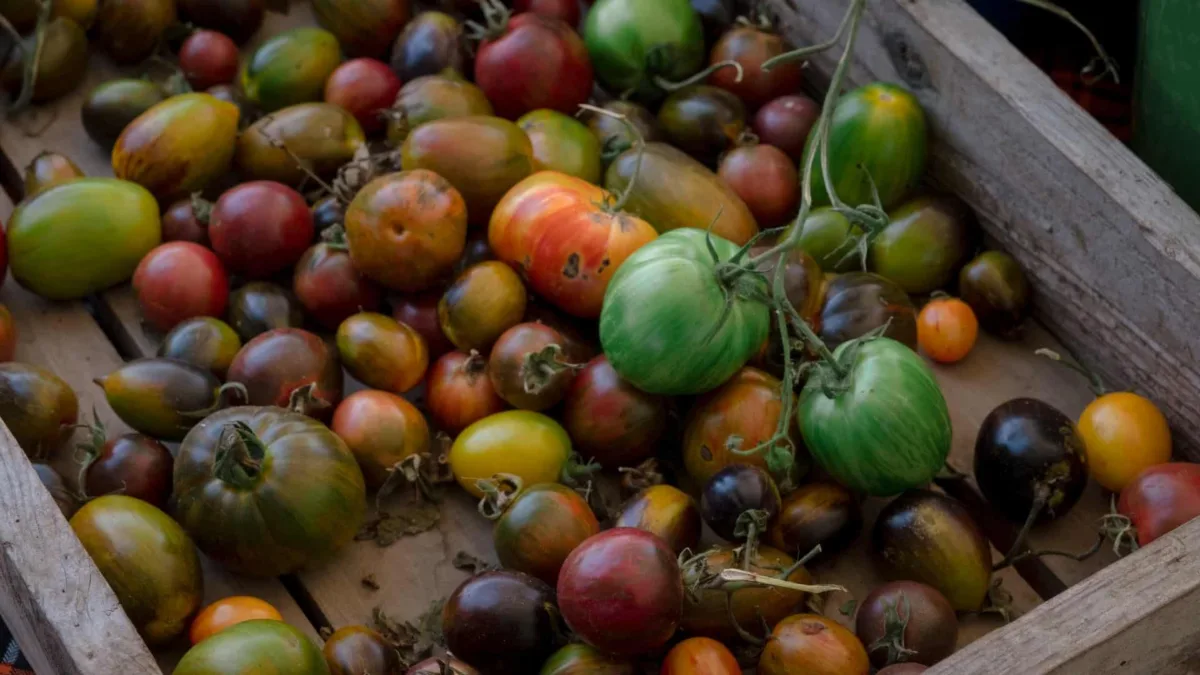Have you ever marveled at the diverse colors and shapes of heirloom plants at your local farmers’ market? These plants are more than just a charming blast from the past; they’re a testament to the rich tapestry of gardening history and biodiversity. But what exactly do heirloom plants mean, and why should you care?
What is an heirloom plant?
Let’s take a look at what makes a plant an heirloom.
First, heirloom plants are defined as open-pollinated or nonhybridized seed varieties that have been passed down through generations of gardeners. They are often unique to their region and have been preserved as they’ve been passed from family to family. Imagine this: the same tomato variety that your grandmother cherished in her garden can still be cultivated in yours today.
Heirlooms can be identified by their appearance. Many of them will be different colors than modern hybrids. They also tend to flower earlier in spring than most commercially available plants do. This is because commercial growers want a longer growing season and thus make more money off of each crop!
What are hybrid plants?
You can produce hybrids by crossing two different species of plants. They’re often more uniform in their appearance and produce higher yields of seeds than heirloom plants. This makes them more productive to grow commercially. Hybrids also tend to be more disease resistant than heirloom crops due to the genetic diversity that’s been bred out of them over time. However, because hybrids have been bred for specific characteristics rather than adaptability or resistance to pests and disease, they cannot be planted for long-term crop production in the same way that heirloom plants can be.
How do heirloom plants differ from hybrid plants?
Heirloom plants are open-pollinated, which means they’re grown from seeds that are harvested from their parent plants. Hybrids, on the other hand, are created by crossing two different species together to produce offspring with desirable traits. Hybridization can be an effective way of creating new plant varieties that offer more resistance to pests and disease or greater productivity in certain areas. But because these plants were engineered in a lab rather than organically cultivated over time, they don’t have as rich of a history as heirloom plants do—and they won’t grow true to type for future generations either. For example: A hybrid tomato will almost always look different from its parents (though it may still taste delicious!).
If you’re looking for something distinctive and special that holds up well over time, an heirloom variety might be right for you! Heirloom varieties tend not only to taste better than some hybrids but also have interesting histories behind them—which makes them even more fun!
Where can you get heirloom plants?
Here are a few places you can find heirloom plants:
- Local farmers markets. You never know what you’ll find at your local farmers market, but if you’re lucky, there’s a chance that someone will be selling heirloom seeds or plants. Just keep an eye out for signs that say “heirloom” or “organic.”
- Seed swaps. A seed swap is basically like a farmers market where people bring their seeds to sell instead of produce. They’re usually organized by neighborhood gardens and community organizations—you can attend one in person or look up when your area hosts them online (just search for things like “seed swap” in your area).
- Online catalogs/websites (like Heirloom Tomato Plants and Seeds) have tons of options! Try searching for heirloom tomatoes on Google to see what comes up first, then click through the different websites until you find something that looks good to you—if nothing seems right yet, try different search terms until something sticks out as being perfect for you!
What type of seed should you choose for your garden?
When choosing heirloom seeds for your garden, it’s important to consider a variety of factors.
- You should choose a variety that is adapted to your region. This will ensure that the plant will thrive in your area and produce high yields.
- In addition the variety should suit to your garden. Some plants require space and other plants do not so choose accordingly! If you have limited space, consider growing herbs (We have a guide on How to grow your own herbs, if you are interested) or vegetables that grow vertically like beans or cucumbers instead of sprawling tomatoes because these will take up less room while still providing lots of food!
- Choose a variety suited to soil type & pH level: Soil pH levels range between 5-8 (alkaline) – acidity levels range between 3-6 (more acidic). If you don’t know what kind of soil you have then test it using an inexpensive soil testing kit from any garden store before deciding which type of seed(s) should be planted there since some plants prefer either alkaline or acidic conditions over others depending upon their species’ preferences (i.e., blueberries prefer slightly acidic soils whereas kiwi vines require highly acidic ones).
Heirloom: Good for a sustainable agriculture and preserving our heritage, but not always be the best choice for you
Heirloom plants are important for preserving our heritage, but they’re not always the best choice for your garden. Hybrids are often better for your garden because they can be more resilient to disease and pests. Heirloom tomatoes, for example, have a difficult time with unfavorable weather.
You may also have heard that hybrid plants don’t taste as good as their heirloom counterparts. This is generally true—hybrids are bred with industrial targets like yield or resistance. Taste is therefore often an afterthought. But if you grow both types of tomato side-by-side in your backyard, you’ll likely find that one variety will outperform the other.

